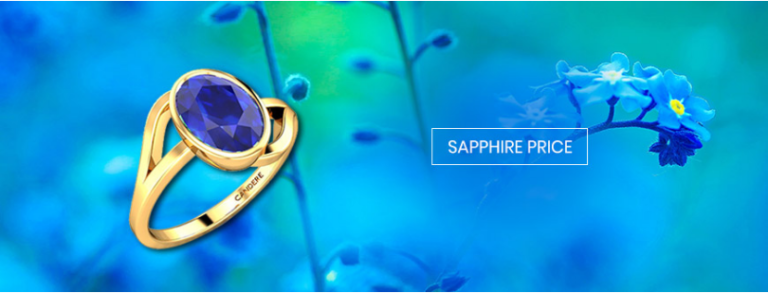
The word Sapphire is often associated with blue color and what comes into mind is the picture of the enchanting oval 12 carat Ceylon Sapphire set in white Gold engagement ring of Kate Middleton, the Duchess of Cambridge.
The Corundum alias Aluminium oxide occurs in two gem varieties, namely Sapphire and Ruby. The different colors of Sapphire are formed when trace metals are present within the mineral Corundum. Small amounts of Iron when present in the mineral imparts pale yellow color to green color to the gem and the same in combination with Titanium yields deep blue colored Sapphire. The trace metals Chromium and Vanadium impart pink and green colors to the Sapphire respectively.
Fancy Sapphires are the Sapphires of colors other than blue and pink. The Star sapphires exhibiting the phenomenon of asterism come in shades of pink, blue, black, white, grey, yellow and purple.
The price of the Sapphire is dependent on the Color, Carat Weight, Cut, Clarity, Location or Origin and Sapphire Treatment.
The blue color is the most preferred color and fetches a high price and is further classified on the basis of hue, tone and saturation; gems with a deeper saturation and high tone fetches more price. The price of Ceylon blue Sapphire is varying per carat due to its quality. The Kashmir Sapphire also fetches higher price per carat, due to its true-blue color and velvety texture.
The Padparadshah Sapphire, a pink orange fancy Sapphire is the second most preferred pink Sapphire.
The carat weight plays an important role in deciding the price of a sapphire stone. The cut of the Sapphire determines the carat weight, brilliance and appearance of the stone; Step cut, Brilliant cut, Mixed Cut and Cabochon Cut being the cuts employed to maximize the brilliancy of Sapphire. Sapphires should be free from visible inclusions which reduces their clarity. The location or origin from which Sapphire is mined has little to do with the price except those mined from Kashmir and Burma, two places famous for fine quality Sapphires.
Sapphire treatment refers to the processes to which the Sapphire has been subjected to, besides its cutting. The Sapphires are classified into untreated, Heated Beryllium Treated, Surface Diffused and Fissure Filled with Glass on the basis of the respective treatments. The untreated ones are the most expensive as they are only subjected to cutting and polishing. The Beryllium treatment is used to convert low grade or less preferred colored Sapphires to Padparadscha, yellow, orange, Golden and other preferred shades.

